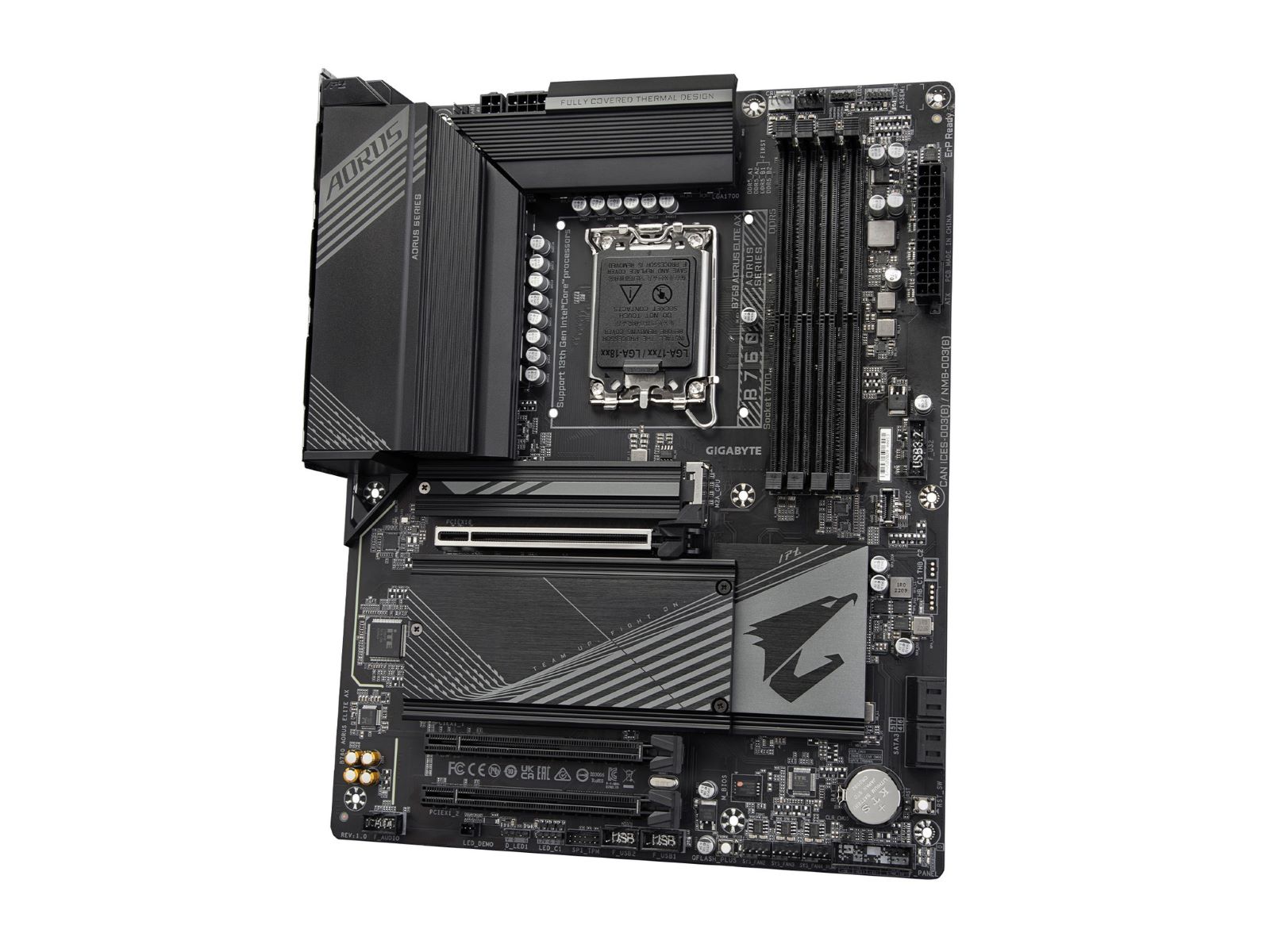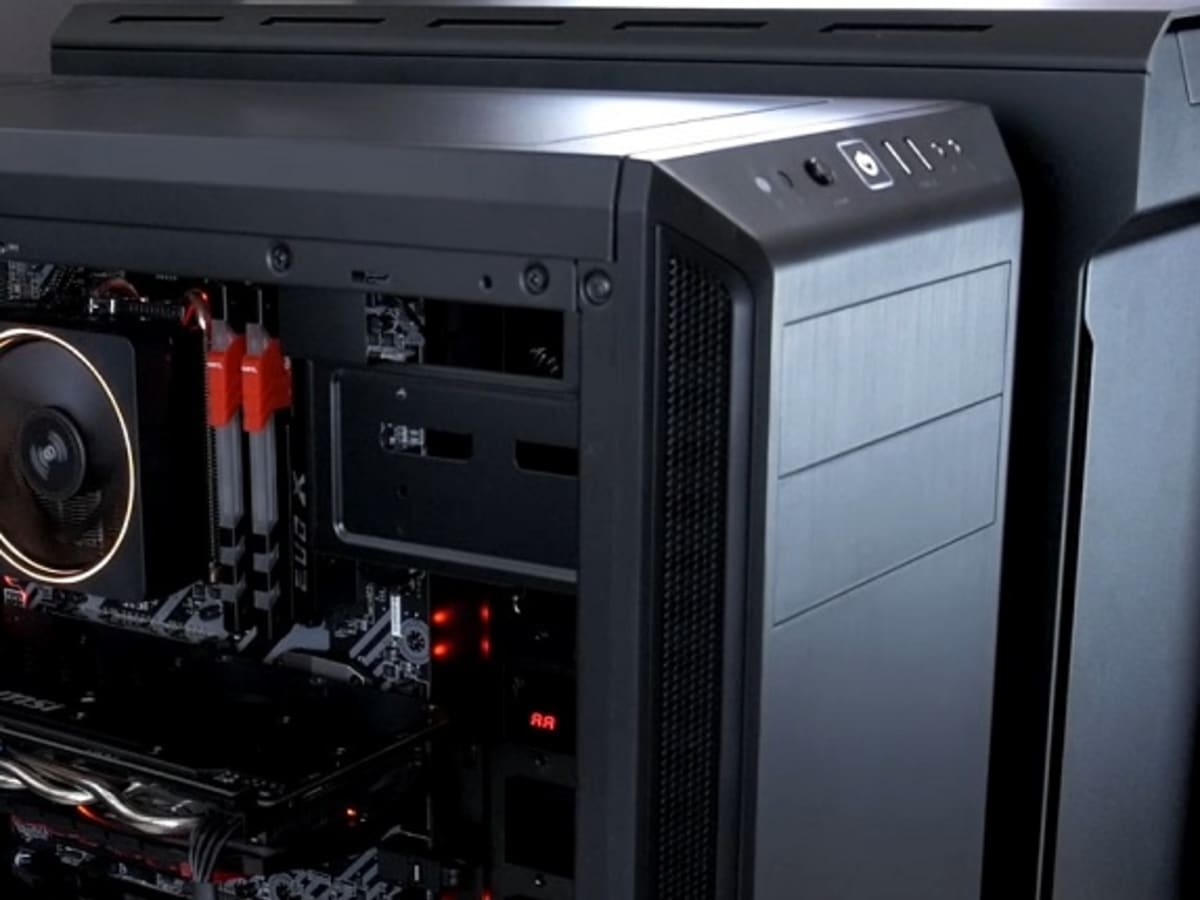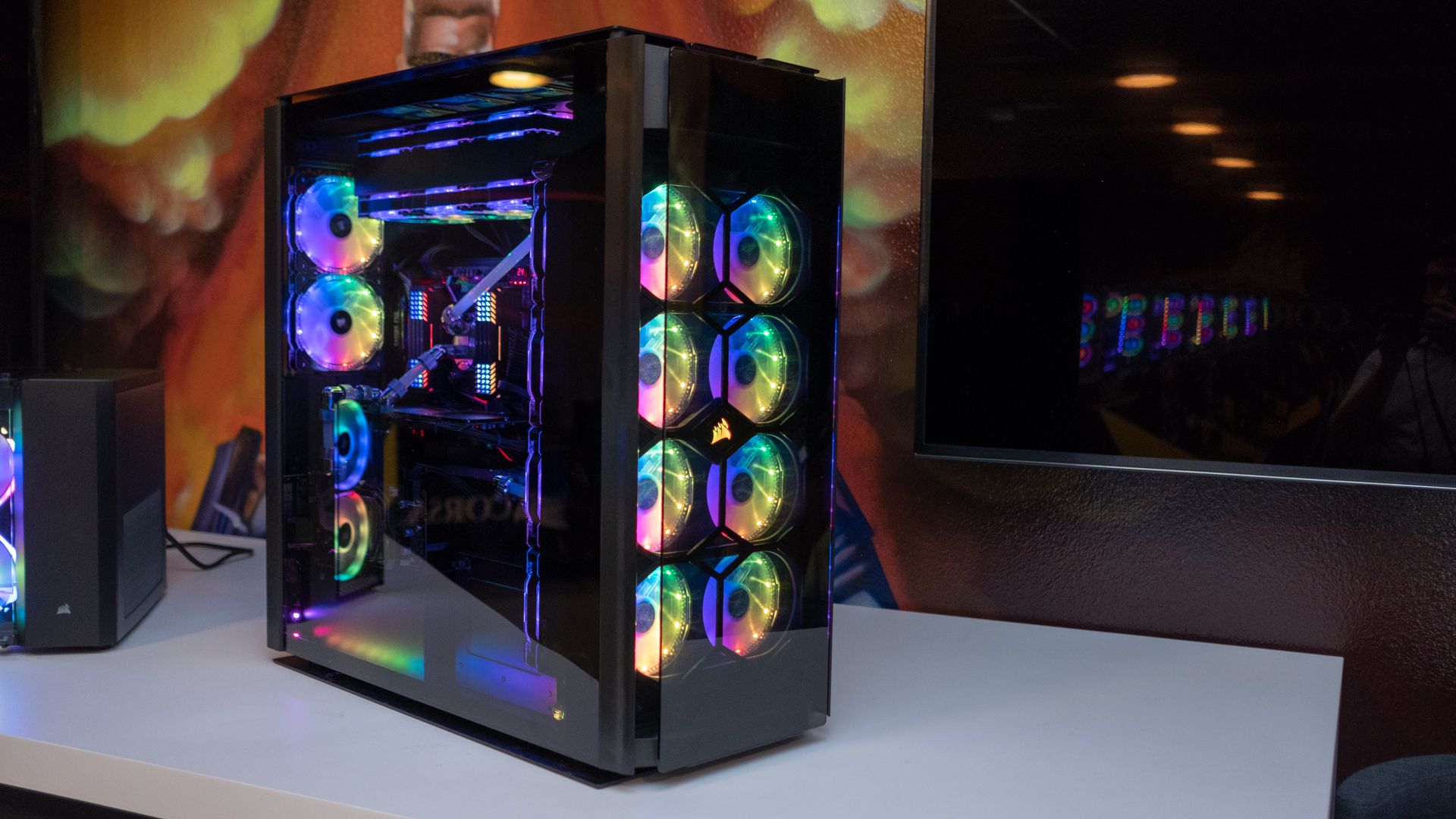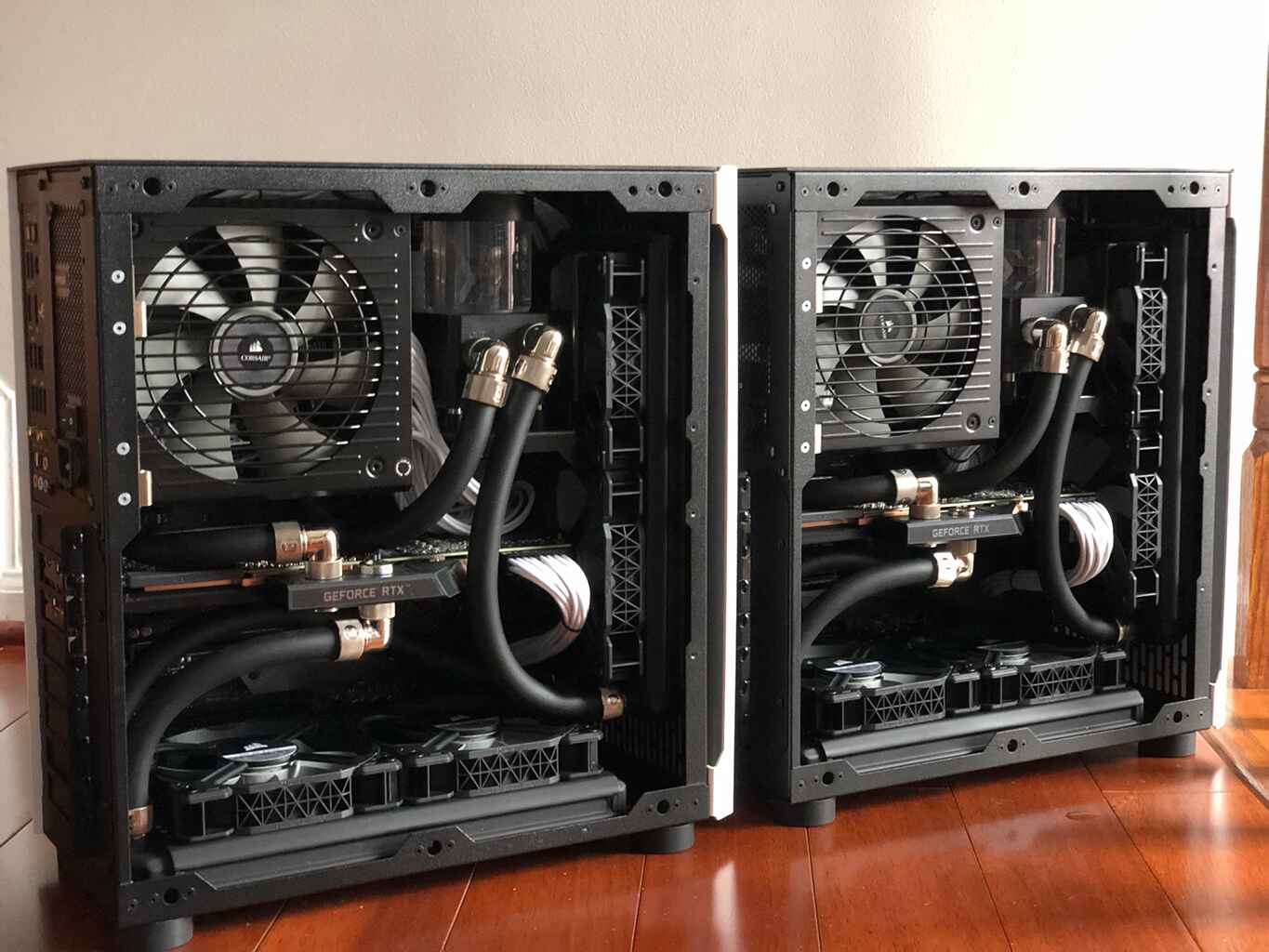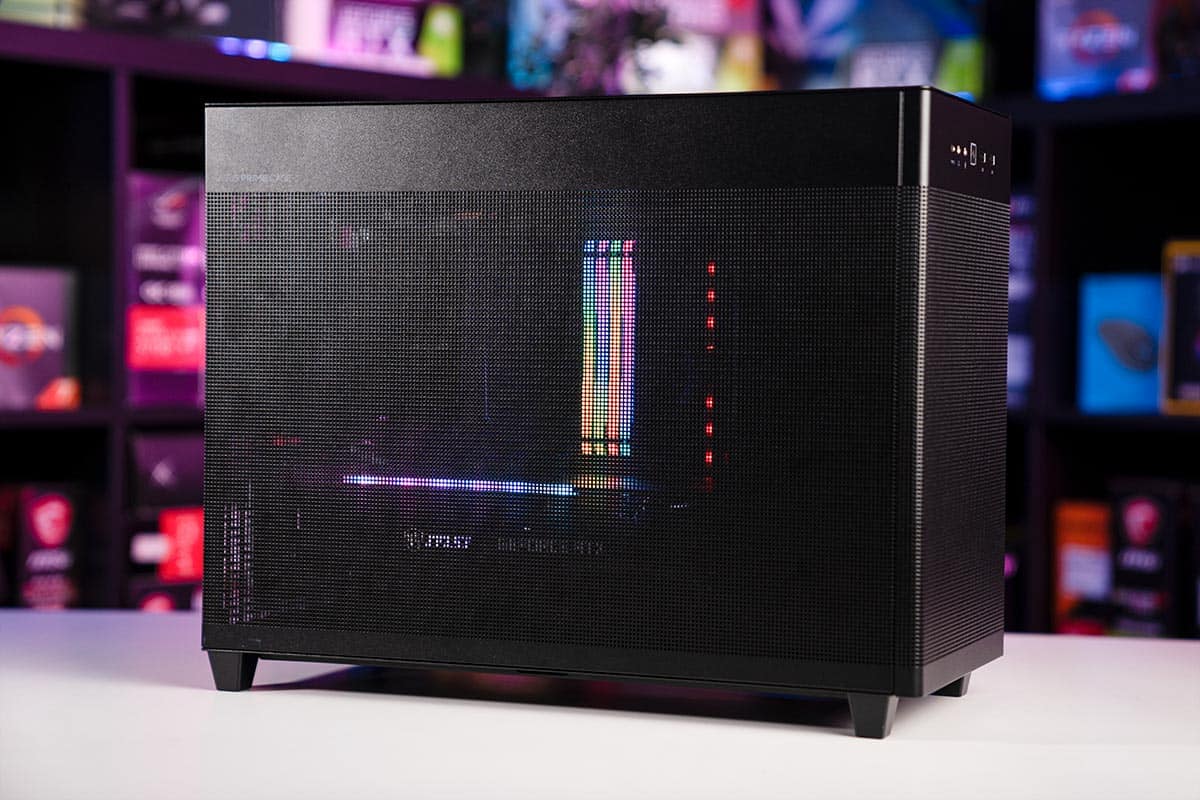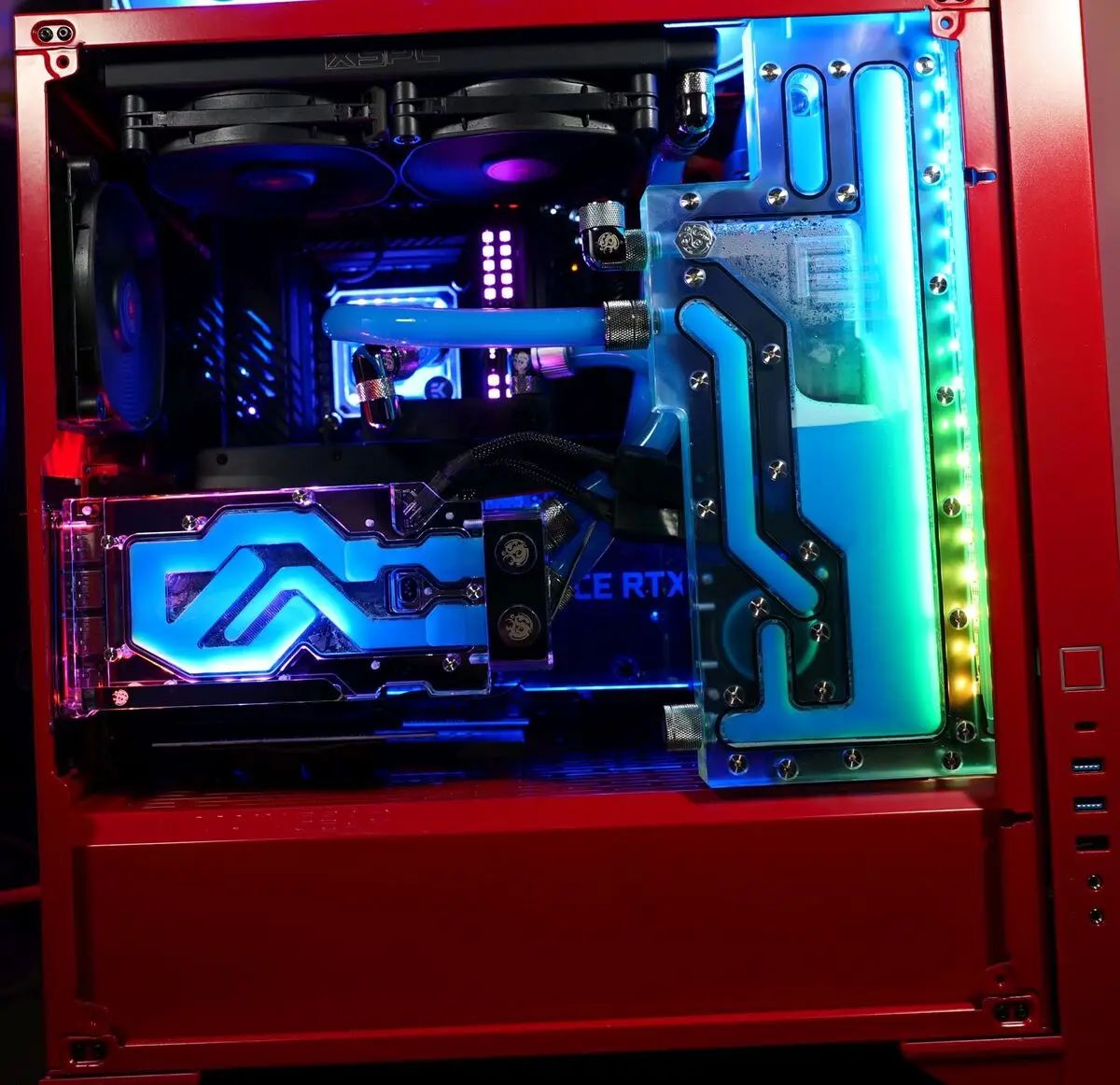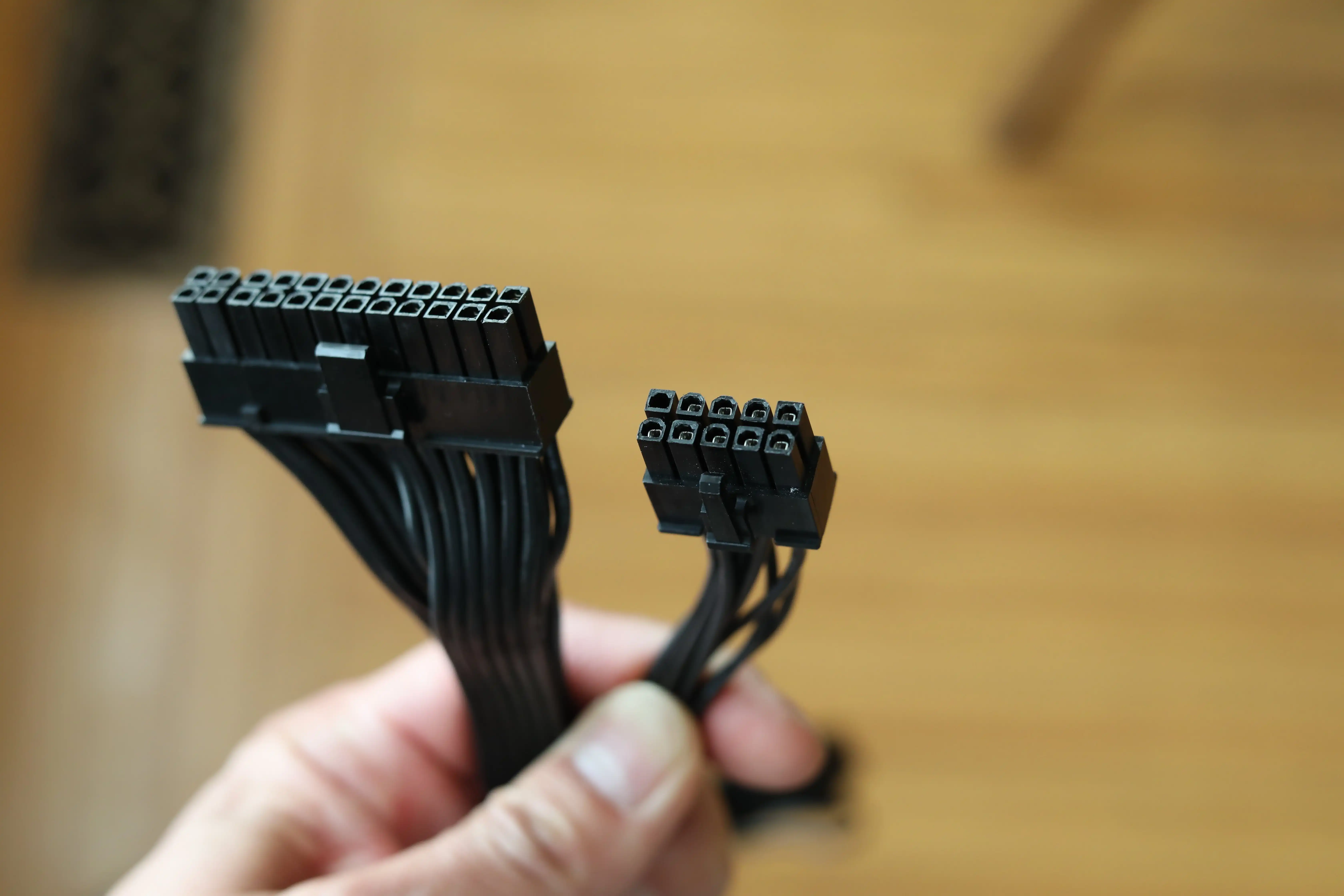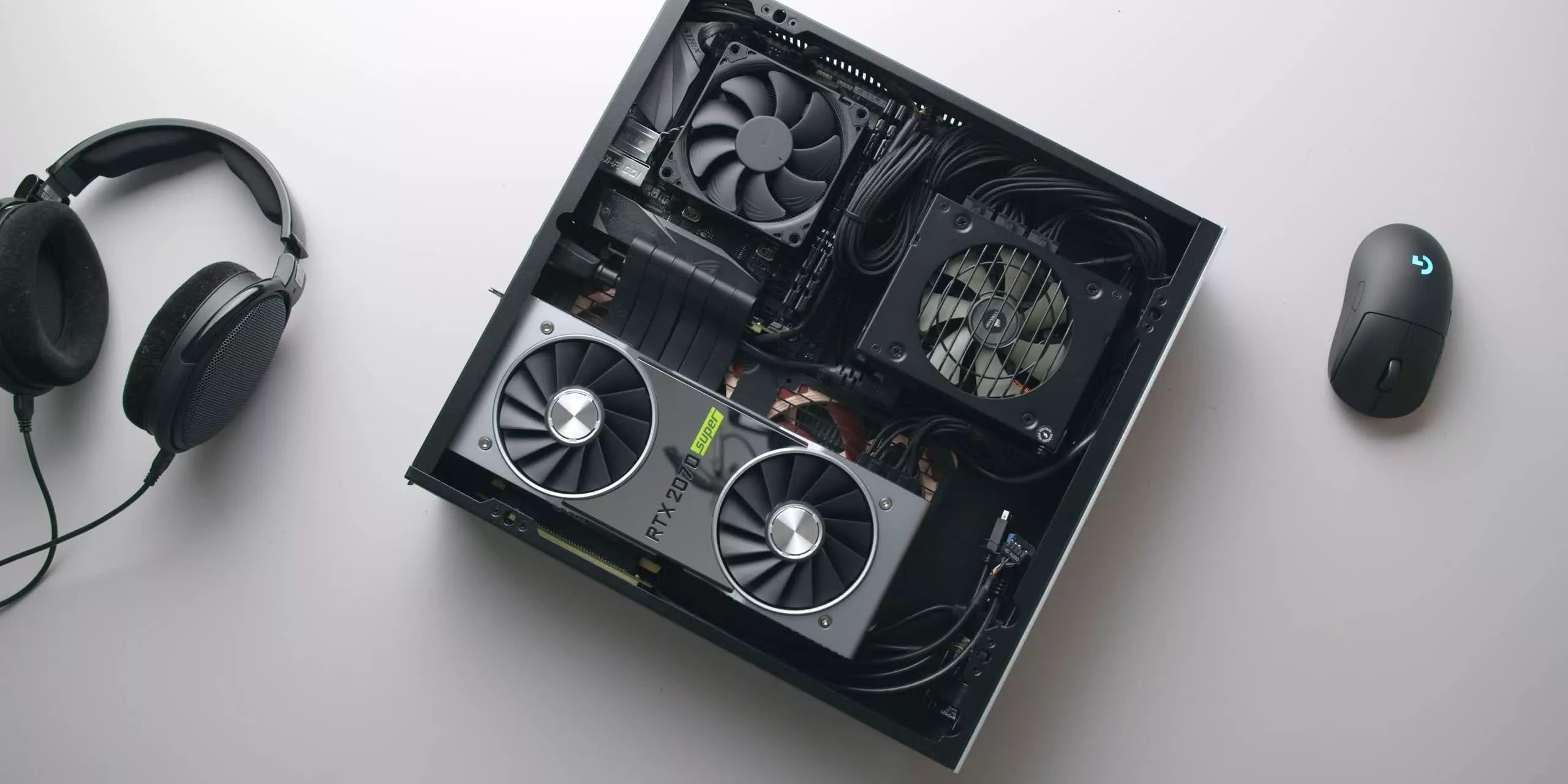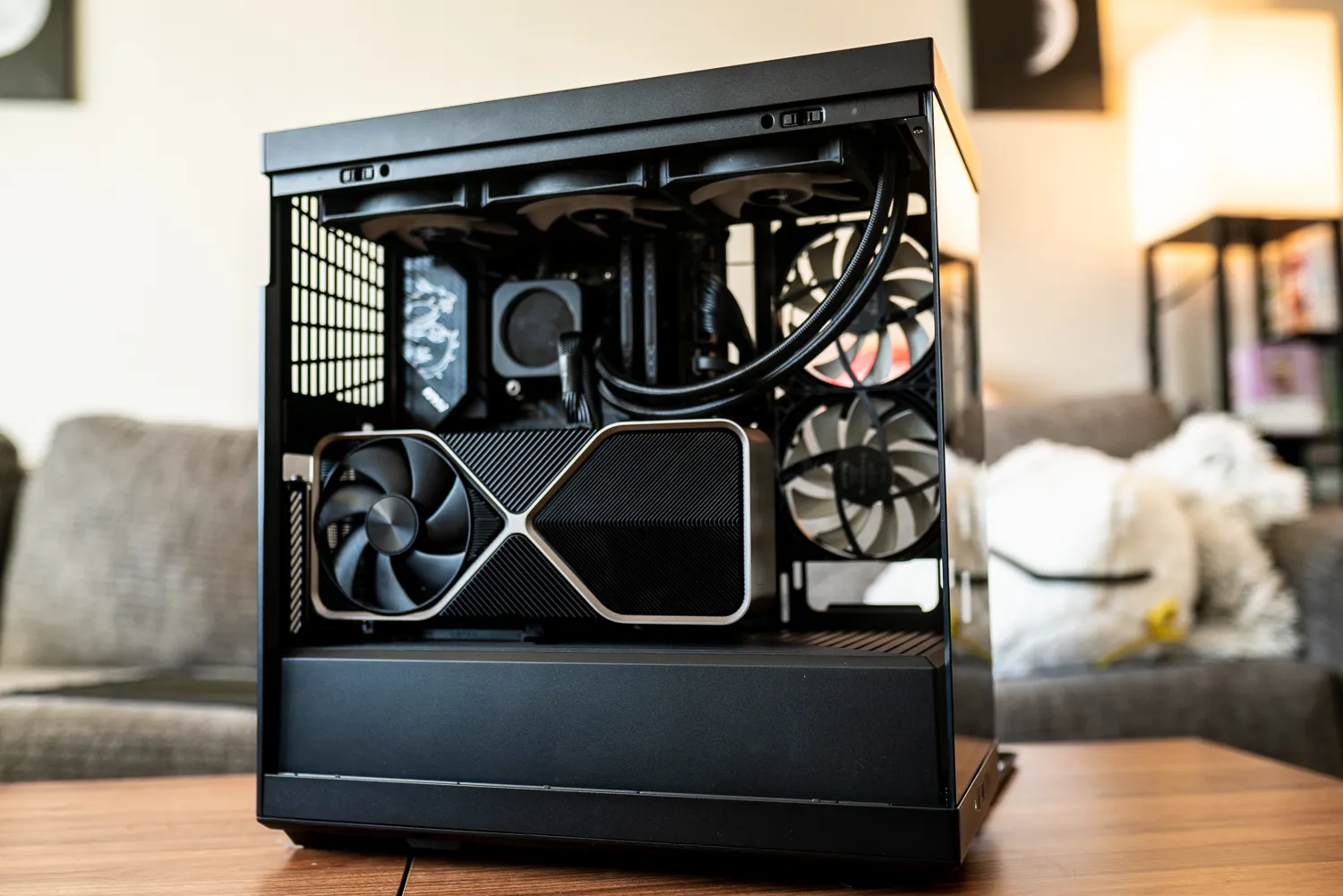Introduction
Welcome to the world of computer hardware! If you’ve ever delved into building or upgrading your own PC, you’ve likely come across the term “ATX motherboard.” But what exactly is an ATX motherboard, and why is it so important?
An ATX motherboard is a crucial component that forms the foundation of a desktop computer. It serves as a hub, connecting various hardware components such as the processor, memory, storage, and expansion cards. Without a motherboard, a computer would be nothing more than a collection of disconnected parts.
ATX, which stands for Advanced Technology eXtended, is a widely-used form factor for motherboards. It was introduced in the late 1990s by Intel to replace the older AT (Advanced Technology) form factor, which was larger and less versatile in terms of compatibility with different components.
In this article, we will explore the features, components, and benefits of ATX motherboards, as well as their compatibility with different PC cases. We will also highlight the key differences between ATX and other motherboard form factors, shedding light on why ATX has become the standard choice for many computer enthusiasts and professionals.
Whether you’re a seasoned PC builder or just starting your journey into the world of computer hardware, understanding ATX motherboards will empower you to make informed decisions when it comes to building or upgrading your own computer.
Definition of ATX Motherboard
An ATX motherboard is a standardized form factor for motherboards used in desktop computers. The term “ATX” stands for Advanced Technology eXtended, which refers to the improved design and functionality that this motherboard form factor offers compared to its predecessor, the AT (Advanced Technology) form factor.
The ATX motherboard follows a set of specifications developed and maintained by Intel. These specifications dictate the size, layout, and connectivity options of the motherboard, ensuring compatibility and interchangeability between different manufacturers and components.
One of the significant advantages of the ATX form factor is its smaller size compared to the AT motherboard. This reduction in size makes ATX motherboards more space-efficient, allowing for compact computer builds and easier integration into various types of PC cases.
ATX motherboards typically measure around 12 inches by 9.6 inches, providing a standard size that fits into the majority of modern computer cases. This uniformity simplifies the process of selecting compatible components and ensures that the motherboard can be easily swapped or upgraded without the need to replace the entire system.
Additionally, ATX motherboards incorporate numerous connectivity options to support a wide range of devices and expansion cards. This includes multiple memory slots, PCI-Express slots for graphics cards, USB ports, SATA connectors for storage devices, audio jacks, and more. These features make ATX motherboards versatile and adaptable to various computing requirements and configurations.
Overall, the ATX motherboard is a foundational component that provides the necessary framework for a desktop computer. Its standardized form factor, compact size, and extensive connectivity options make it a popular choice among computer enthusiasts and professionals alike.
History of ATX Motherboard
The history of the ATX motherboard can be traced back to the late 1990s when Intel introduced it as an upgrade to the older AT (Advanced Technology) form factor. The AT form factor, with its larger size and limited expansion capabilities, was becoming outdated and unsuitable for the evolving needs of computer users.
Intel recognized the need for a new motherboard form factor that would address the limitations of the AT design and support the latest technologies. Thus, in 1995, the ATX form factor was introduced, revolutionizing the computer industry.
The ATX motherboard brought several significant improvements to the table. One of the key changes was the repositioning of the expansion slots and connectors, making it easier for users to access and install components. The previous AT form factor had the expansion slots situated perpendicular to the processor socket, making it challenging to install and remove expansion cards without interfering with other components.
The ATX form factor also introduced a new power supply connector known as the ATX power connector. This connector provided more power and introduced a soft power feature, allowing the computer to be turned on and off through software commands. This innovation improved energy efficiency, reduced power consumption, and simplified overall system management.
Over the following years, the ATX motherboard continued to evolve. Additional revisions to the form factor introduced new features and improvements, such as support for higher memory capacities, faster bus speeds, and newer connectivity standards like USB and SATA.
As technology advanced, motherboards became increasingly compact and integrated. Mini-ATX and Micro-ATX variants of the ATX form factor were introduced, catering to the needs of smaller computer builds and specialized applications.
Today, the ATX motherboard remains one of the most widely used motherboard form factors in the industry. Its compatibility with a broad range of components, standardized size, and extensive feature set have made it a popular choice for both consumer and professional users.
With each new iteration, the ATX motherboard continues to adapt to the ever-changing demands of the computing landscape, providing users with a reliable and versatile foundation for their desktop systems.
Features of ATX Motherboard
ATX motherboards come packed with a variety of features that make them versatile and suitable for a wide range of computer builds. These features contribute to the overall performance, functionality, and connectivity options of the motherboard, offering users the flexibility to customize their systems to meet their specific needs.
One of the notable features of ATX motherboards is their extensive expansion capabilities. ATX motherboards typically come with multiple PCI-Express slots, allowing users to install graphics cards, sound cards, network cards, and other expansion cards to enhance the functionality of their systems. Additionally, ATX motherboards may include several RAM slots, accommodating a large amount of memory for improved multitasking and performance.
Another important feature of ATX motherboards is their support for various connectivity options. These motherboards typically offer multiple USB ports, providing convenient connectivity for peripherals such as keyboards, mice, printers, and external storage devices. They may also come equipped with audio jacks, Ethernet ports, and video outputs for seamless integration with speakers, networking devices, and monitors.
ATX motherboards often include onboard storage connectors, such as SATA ports, enabling users to connect and utilize multiple hard drives, solid-state drives (SSDs), and optical drives. This facilitates data storage, retrieval, and backup, ensuring efficient and reliable system performance.
Power delivery is another crucial aspect of ATX motherboards. These motherboards are designed to provide stable and sufficient power to all the connected components. They feature power phase designs that ensure efficient power distribution and minimize voltage fluctuations, thereby enhancing system stability and preventing issues such as crashes or hardware damage.
Furthermore, ATX motherboards typically incorporate advanced BIOS (Basic Input/Output System) firmware. The BIOS provides users with a user-friendly interface to configure various system settings, including boot order, overclocking options, and hardware monitoring. It allows users to customize their system’s performance and functionality according to their requirements.
Lastly, many ATX motherboards come equipped with additional features like RGB lighting, onboard Wi-Fi, dedicated audio enhancements, and advanced cooling solutions. These features allow users to add a touch of personalization to their systems and enhance the overall user experience.
Overall, the numerous features present in ATX motherboards make them highly capable and adaptable to various computing needs. Whether you’re a casual user, a gaming enthusiast, or a professional requiring extensive connectivity and expansion options, the features of ATX motherboards enable you to build a powerful and customized desktop system.
Components of an ATX Motherboard
An ATX motherboard consists of several key components that work together to provide the necessary functionality for a desktop computer. Understanding these components can help users better comprehend the inner workings of their systems and make informed decisions when it comes to building, upgrading, or troubleshooting their computers.
1. CPU Socket: The central processing unit (CPU) socket is where the processor is installed. This socket connects the CPU to the motherboard and provides the necessary power and data connections.
2. Memory Slots: ATX motherboards typically have multiple memory slots where RAM modules can be installed. These slots support different types of memory (such as DDR4 or DDR5) and determine the maximum amount of memory that can be installed in the system.
3. Expansion Slots: ATX motherboards feature different expansion slots that allow users to install various types of expansion cards. Common slots include PCI-Express (PCIe) slots for graphics cards, sound cards, and network cards, as well as legacy slots like PCI for older peripherals.
4. Power Connectors: ATX motherboards have specific power connectors that supply power to the motherboard itself. The main power connector is usually a 24-pin connector, while additional connectors might include an 8-pin or 4-pin CPU power connector for providing power to the CPU.
5. Storage Connectors: These connectors allow for the connection of various storage devices, such as hard drives and solid-state drives. SATA connectors are commonly found on ATX motherboards and support the high-speed transfer of data.
6. I/O Ports: I/O (input/output) ports are the external connections located on the back panel of the motherboard. These ports include USB ports, audio jacks, Ethernet ports, and video connectors, providing connectivity options for peripherals and external devices.
7. BIOS Chip: The Basic Input/Output System (BIOS) chip contains the firmware that initializes the hardware and ensures proper communication between the motherboard and other components. The BIOS also allows users to configure system settings.
8. Voltage Regulators: The voltage regulators on the motherboard regulate and provide stable power to various components, ensuring that they receive the correct voltage levels for proper operation.
9. Cooling Solutions: ATX motherboards often incorporate cooling solutions, such as heat sinks and fans, to dissipate heat generated by the CPU and other components. These solutions help maintain optimal operating temperatures and prevent overheating.
10. Chipset: The chipset is a crucial component on the motherboard, responsible for managing data flow between the CPU, memory, storage devices, and other peripherals. The chipset also provides additional features and functionalities, including support for specific technologies and expansion slots.
Understanding the components of an ATX motherboard is essential for troubleshooting hardware issues, selecting compatible components, and optimizing system performance. Each component plays a vital role in ensuring the smooth operation of the computer and contributes to its overall functionality.
Connectors and Slots on an ATX Motherboard
An ATX motherboard incorporates various connectors and slots that serve as the interface between the motherboard and other hardware components. These connectors and slots enable the seamless integration of peripherals, expansion cards, and storage devices, offering users extensive connectivity and expandability options.
1. CPU Socket: The CPU socket is a specialized slot designed to accommodate the processor. It provides the necessary power and data connections for the CPU to communicate with the rest of the system. Common CPU socket types include Intel’s LGA (Land Grid Array) and AMD’s PGA (Pin Grid Array) sockets.
2. Memory Slots: ATX motherboards typically have multiple memory slots, which support different types of memory modules (such as DDR4 or DDR5). These slots allow for the installation of RAM to provide the necessary working memory for the system. The number of memory slots varies depending on the specific motherboard model.
3. Expansion Slots: ATX motherboards offer a range of expansion slots to accommodate various expansion cards. The most common type is PCI-Express (PCIe) slots, which are used for graphics cards, sound cards, network cards, and other add-on peripherals. PCIe slots come in different sizes, including x1, x4, x8, and x16, each offering different bandwidth capabilities.
4. Power Connectors: ATX motherboards require power connectors to supply power to the system. The primary connector is the 24-pin ATX power connector, which delivers power from the power supply unit (PSU) to the motherboard. Additionally, a separate 8-pin or 4-pin CPU power connector provides dedicated power to the processor.
5. Storage Connectors: ATX motherboards incorporate various connectors for connecting storage devices. The most common type is the SATA (Serial ATA) connector, which allows for the connection of hard disk drives (HDDs) and solid-state drives (SSDs). M.2 connectors are also present on many ATX motherboards, providing a high-speed interface for NVMe SSDs.
6. I/O Ports: ATX motherboards feature a range of I/O (input/output) ports on their rear IO panel. These ports include USB (Universal Serial Bus) ports for connecting peripherals, audio jacks for sound input/output, Ethernet ports for networking, video connectors (such as HDMI or DisplayPort) for connecting displays, and more. The number and type of I/O ports vary depending on the specific motherboard model.
7. Front Panel Connectors: ATX motherboards have a set of connectors located on the edge of the motherboard that allow for the connection of the computer case’s front panel buttons and indicators. These connectors include power switch, reset switch, power LED, HDD LED, and audio headers.
8. Fan Headers: ATX motherboards feature multiple fan headers that allow for the connection of case fans and CPU coolers. These headers provide power and control signals to the fans, enabling users to adjust the fan speeds for optimal cooling performance.
9. USB Headers: In addition to the USB ports on the rear IO panel, ATX motherboards often have internal USB headers. These headers allow for the connection of USB ports on the front or top panel of the computer case, providing convenient access for connecting USB devices.
10. Audio Headers: ATX motherboards typically have audio headers for connecting front panel audio outputs and inputs. These headers enable users to connect headphones, microphones, and speakers to the front panel of the computer case, providing easy access to audio connections.
These connectors and slots on an ATX motherboard offer users a wide range of options for expanding their system’s capabilities and connecting various peripherals. The flexibility provided by the multitude of connectors and slots makes ATX motherboards suitable for a diverse range of computing needs.
Benefits of Using an ATX Motherboard
ATX motherboards offer several benefits that make them a popular choice among computer enthusiasts and professionals. From their compatibility and expandability to their standardization and flexibility, ATX motherboards provide users with numerous advantages for building and customizing their desktop systems.
1. Compatibility: ATX motherboards follow industry-standard specifications, ensuring compatibility with a wide range of components and peripherals. This means users have a vast selection of processors, RAM modules, graphics cards, storage devices, and other hardware that is compatible with ATX motherboards, making it easier to find and upgrade components without compatibility issues.
2. Expandability: ATX motherboards typically offer multiple expansion slots, allowing users to easily add or upgrade components such as graphics cards, sound cards, and network cards. This expandability allows for future-proofing the system and adapting to changing technology needs and advancements.
3. Standardization: ATX motherboards adhere to standardized form factors and specifications, making them widely available from various manufacturers. This standardization ensures that ATX motherboards can be easily replaced or upgraded without the need for a complete system overhaul. It also promotes healthy competition among manufacturers, resulting in better quality and a wider range of options for users.
4. Enhanced Cooling: ATX motherboards often come with advanced cooling features, such as multiple fan headers and strategically placed heat sinks, allowing for efficient heat dissipation. This helps to maintain optimal operating temperatures for the components, prolongs their lifespan, and ensures stable system performance even under heavy workloads or gaming sessions.
5. Versatility: ATX motherboards offer versatility in terms of component compatibility, size, and case options. They can be incorporated into various computer builds, ranging from standard desktops to gaming rigs, workstations, or even compact form factor builds using Mini-ATX or Micro-ATX variants. This versatility allows users to customize their systems according to their specific needs and preferences.
6. Connectivity Options: ATX motherboards provide a wide range of connectivity options, including USB ports, audio jacks, Ethernet ports, and video connectors. This ample connectivity allows users to connect peripherals, external devices, and networking components, offering convenience and flexibility in their system setup.
7. Overclocking Potential: ATX motherboards often come equipped with advanced BIOS firmware and power delivery systems that facilitate overclocking. Overclocking allows users to push their components beyond their default specifications to achieve higher performance levels. The robust power delivery and BIOS options found on ATX motherboards make them well-suited for overclocking and extracting extra performance from compatible hardware.
8. Community Support: The widespread use of ATX motherboards has resulted in a large community of users, enthusiasts, and experts who provide support, knowledge, and resources. This community support can be invaluable when troubleshooting issues, seeking advice, or finding customizations and modifications to enhance the performance and functionality of ATX-based systems.
In summary, the benefits of using an ATX motherboard are numerous. Their compatibility, expandability, standardization, cooling capabilities, versatility, connectivity options, overclocking potential, and community support all contribute to creating a reliable and customizable system. With an ATX motherboard as the foundation, users can build powerful, adaptable, and future-proof desktop computers to suit their specific needs and goals.
Differences between ATX and Other Motherboard Form Factors
When it comes to motherboard form factors, ATX is just one of many options available. Each form factor comes with its own unique characteristics, advantages, and limitations. Understanding the differences between ATX and other motherboard form factors can help users choose the most suitable option for their specific requirements and preferences.
1. ATX vs. Micro-ATX: Micro-ATX is a smaller form factor compared to ATX. While ATX motherboards typically measure around 12 inches by 9.6 inches, Micro-ATX motherboards are usually 9.6 inches by 9.6 inches. Micro-ATX motherboards have fewer expansion slots and memory slots compared to ATX motherboards, making them more suitable for compact computer builds that prioritize space-saving without sacrificing too much functionality.
2. ATX vs. Mini-ITX: Mini-ITX is even smaller than Micro-ATX and is designed for ultra-compact system builds. Mini-ITX motherboards measure 6.7 inches by 6.7 inches, significantly reducing the available space for expansion slots and connectors. Mini-ITX motherboards typically have only one expansion slot and fewer memory slots, making them suitable for small form factor systems where space is a major constraint.
3. ATX vs. E-ATX: Extended ATX (E-ATX) is a larger form factor than ATX, designed to provide even more expansion options and better support for high-performance components. E-ATX motherboards are wider than ATX motherboards, typically measuring around 12 inches by 13 inches. E-ATX motherboards offer additional expansion slots and connectors, allowing for more extensive customization and support for multiple graphics cards or other high-end peripherals.
4. ATX vs. BTX: BTX (Balanced Technology Extended) was a proposed motherboard form factor designed to improve cooling and component layout. Although it never gained widespread adoption, BTX featured a reversed layout compared to ATX, with the CPU socket positioned closer to the front of the case. This layout aimed to enhance airflow and cooling efficiency. However, the industry did not fully embrace BTX, and it has largely been phased out in favor of ATX and other form factors.
5. ATX vs. ITX: ITX (Information Technology eXtended) is a form factor that focuses on compactness and minimal footprint. ITX motherboards come in several variants, including Mini-ITX and Nano-ITX. ITX form factors are smaller than ATX and are typically used in small form factor or compact systems where space is at a premium. Despite their small size, ITX motherboards offer enough connectivity options to accommodate the essential components of a modern PC, albeit with limited expansion options.
While ATX remains the most popular motherboard form factor for traditional desktop systems, it’s important to consider the specific needs and constraints of the intended build before selecting a form factor. Factors such as available space, desired expansion options, and cooling considerations should all be taken into account when deciding between ATX and other motherboard form factors.
Compatible PC Cases for ATX Motherboards
When choosing an ATX motherboard, it is essential to ensure compatibility with the computer case. The case must have sufficient space, mounting points, and connector cutouts to accommodate the ATX motherboard and its associated components. Fortunately, a wide range of PC cases is available, specifically designed to house ATX motherboards and provide optimal support for a seamless and efficient build.
1. Mid Tower Cases: Mid tower cases are the most commonly used PC cases for ATX motherboards. These cases strike a balance between size and functionality, offering ample space for the motherboard, expansion slots, and cooling solutions. Mid tower cases typically have additional drive bays, slots for fans or radiators, and sufficient cable management options. Additionally, they often come with front panel USB and audio ports for enhanced convenience.
2. Full Tower Cases: Full tower cases are larger and provide even more space compared to mid tower cases. These cases are ideal for high-end builds with multiple graphics cards, extensive storage configurations, and advanced cooling setups. Full tower cases can accommodate oversized ATX motherboards, such as Extended ATX (E-ATX) variants. They offer additional drive bays, expanded fan and radiator support, as well as improved cable management options to accommodate the increased hardware capacity.
3. Small Form Factor Cases: While ATX motherboards are typically associated with larger cases, there are also small form factor cases available that can house ATX motherboards. These cases, often referred to as “ATX SFF” cases, prioritize compactness without compromising functionality. They provide the flexibility of using an ATX motherboard while maintaining a compact footprint. Although small form factor cases may have limited expansion slots and reduced clearance for cooling solutions, they offer an excellent solution for users who desire a compact ATX build.
4. Modular Cases: Modular cases provide flexibility in adapting to different form factors, including ATX. These cases feature removable or adjustable drive cages and motherboard trays, allowing users to customize the interior layout according to their specific needs. Modular cases are particularly useful when planning for future upgrades or changes in system configuration, offering the versatility to accommodate different sizes of motherboards, including ATX variants.
5. Aesthetic Cases: PC cases come in various aesthetic designs to suit personal preferences and complement desired themes. These cases often feature tempered glass side panels, RGB lighting, and sleek exterior finishes. While such cases prioritize aesthetics, they also provide ample space and compatibility for ATX motherboards, ensuring both functionality and visual appeal.
When selecting a PC case for an ATX motherboard, it is crucial to consider factors beyond just size and compatibility. Ensure that the case has proper cooling capabilities, good airflow, cable management options, and sufficient drive bays to accommodate your storage needs.
Overall, the compatibility between ATX motherboards and PC cases is essential to ensure a successful and hassle-free build. With the wide range of case options available, there is a suitable choice for every user’s preference and requirement, providing a solid foundation for a customized and efficient ATX-based system.
Conclusion
ATX motherboards have played a central role in the world of computer hardware for decades, providing a reliable and versatile foundation for desktop systems. These motherboards, with their standardized form factor, extensive connectivity options, and expandability, offer users significant benefits and flexibility for building and customizing their computers.
The definition of ATX motherboard and its history showcase how it has evolved over time to meet the ever-changing needs of computer users. The compact size, numerous features, and extensive component compatibility make ATX motherboards a popular choice among computer enthusiasts and professionals.
ATX motherboards boast a variety of useful features, from expansion slots and memory slots to power connectors and storage connectors. These components, along with the various connectivity options available, contribute to the overall functionality and expandability of the motherboard.
The differences between ATX and other motherboard form factors highlight the various options available to users. Whether they prioritize space-saving with Micro-ATX or Mini-ITX, seek maximum expandability with E-ATX, or explore the balance of size and functionality with ATX, choosing the right form factor depends on specific needs and constraints.
It is important to select a compatible PC case when working with an ATX motherboard. Mid tower cases, full tower cases, small form factor cases, modular cases, and aesthetic cases all offer options for accommodating ATX motherboards, ensuring proper fit, functionality, and aesthetics.
In conclusion, ATX motherboards serve as the backbone of desktop systems, providing compatibility, expandability, and standardization for a wide range of components. Their versatility, reliability, and extensive support within the computer community make ATX motherboards a trusted choice for both novice and experienced computer builders.







